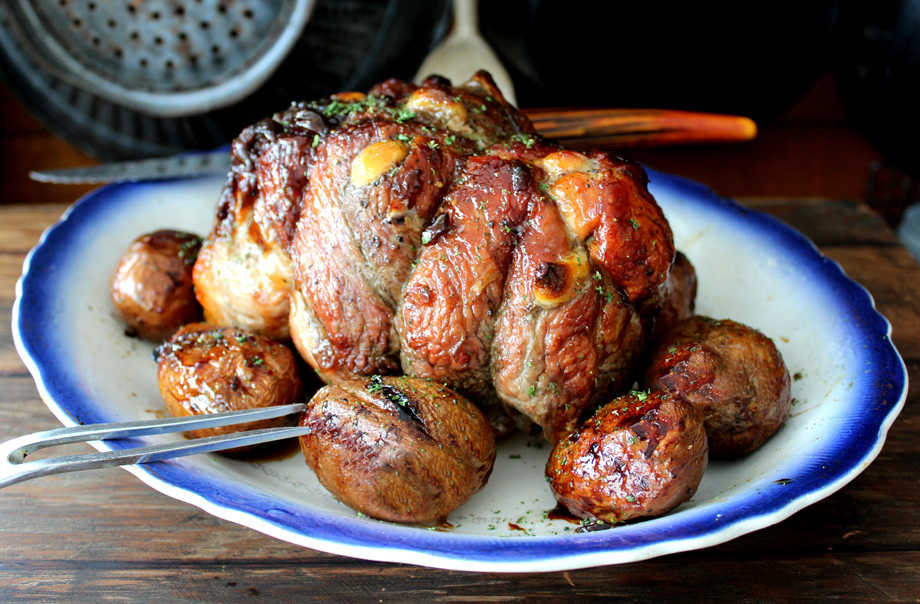In our house, Sunday dinner is eaten around 3 p.m., and it is our main (and perhaps only) meal of the day. When I was growing up, in Huntington, Long Island, we ate dinner on Sunday around 3 p.m., as well – not too long after we got home from church. Most Sundays, as I recall, we ate roasted chicken, brought from Kerber’s Poultry Farm, on Pulaski Road, which was surrounded by miles of potato fields. There was a farm stand, too, where we also purchased seasonal vegetables to go along with the chicken. On special occasions, we had a roast, usually beef, but sometimes pork. Of course, eating a roast on Sunday is nothing unique and the custom has a long history, particularly in Britain, where “British Sunday Lunch” is also referred to as “Sunday Roast.” Until recently, however, for fear of contracting trichinosis, a food borne disease caused by eating raw or undercooked pork infested with the larvae of a worm (trichinella spirali), we overcooked pork. Today, we know that pork roasts cooked to an internal temperature of 145 degrees (with a three-minute rest time) is perfectly safe to eat, yet I prefer pork cooked to 168 degrees, which still results in meat that is juicy, flavorful and tender, with no traces of pink, which I (and a great many of you), don’t much care for. Before making your own Sunday roast pork dinner, take note of the cooking times and schedule for roasting the meat, deglazing your baking pan and cooking the potatoes. Although attention to detail is pretty much essential for putting on a proper Sunday dinner, any occasion that fosters the coming together of family and friends around the dining table, whether it be Sunday, or not, is well worth the effort and then some. For more information about raw pork, including storage information, see our fact sheet at www.fsis.usda.gov/Fact_Sheets/ Pork_From_Farm_to_Table.
More in Life

Minister’s Message: Finding love in the pits
Navigate your way out of the mire of life with the love and grace of Jesus Christ.

Forever Dance comes full circle
The anniversary show will feature returning appearances from alumni and messages from former coaches.

Poopdeck: Nearly a century of adventure — Part 7
By the late 1970s, Poopdeck was already investing in stocks and bonds.

Life in the Pedestrian Lane: Turn the radio on
Radio had something for everyone.

Quick and kid-pleasing casserole
This wholesome dish is great for busy families and fussy eaters.

Performers set murderous ‘Mousetrap’
The longest-running stageplay in history, the English whodunit challenges audience to unravel the plot.

Fueling the fearless
My son’s adventurous nature unfortunately does not extend to his diet.

Poopdeck: Nearly a century of adventure — Part 6
Poopdeck Platt was nearly 80 when he decided to retire from commercial fishing.

Unhinged Alaska: It can’t be break-up ‘cause there was no winter
I meditate a lot. Sometimes up to several seconds at once. Last… Continue reading
